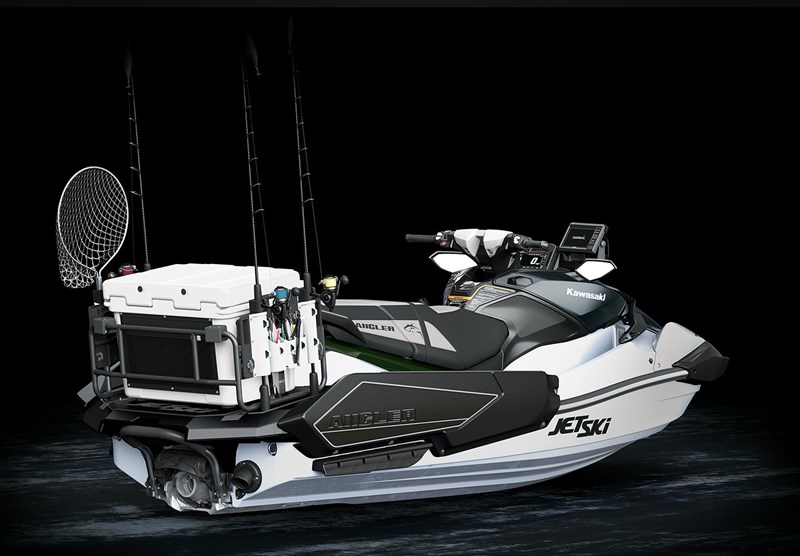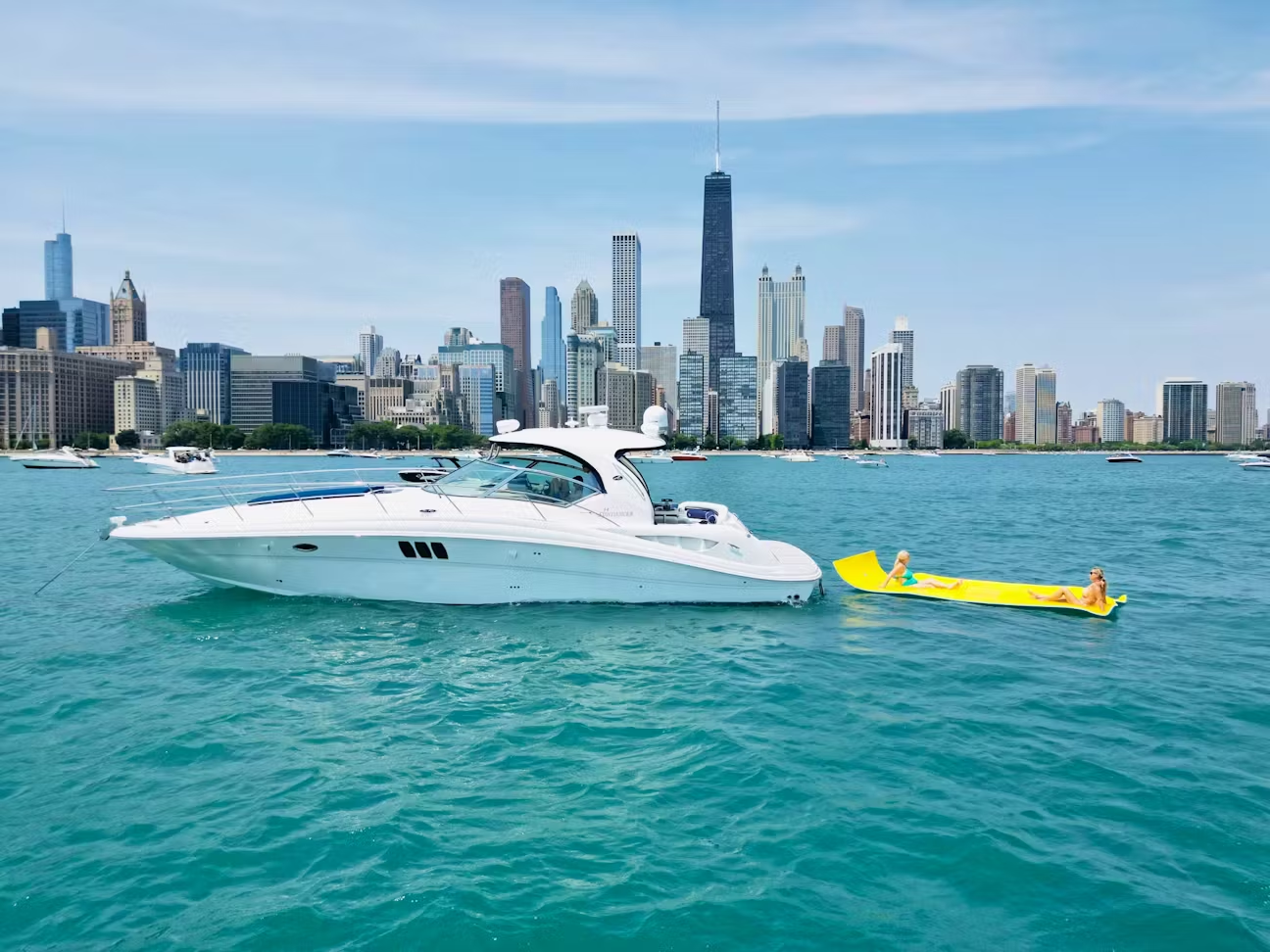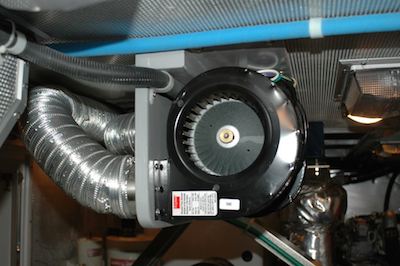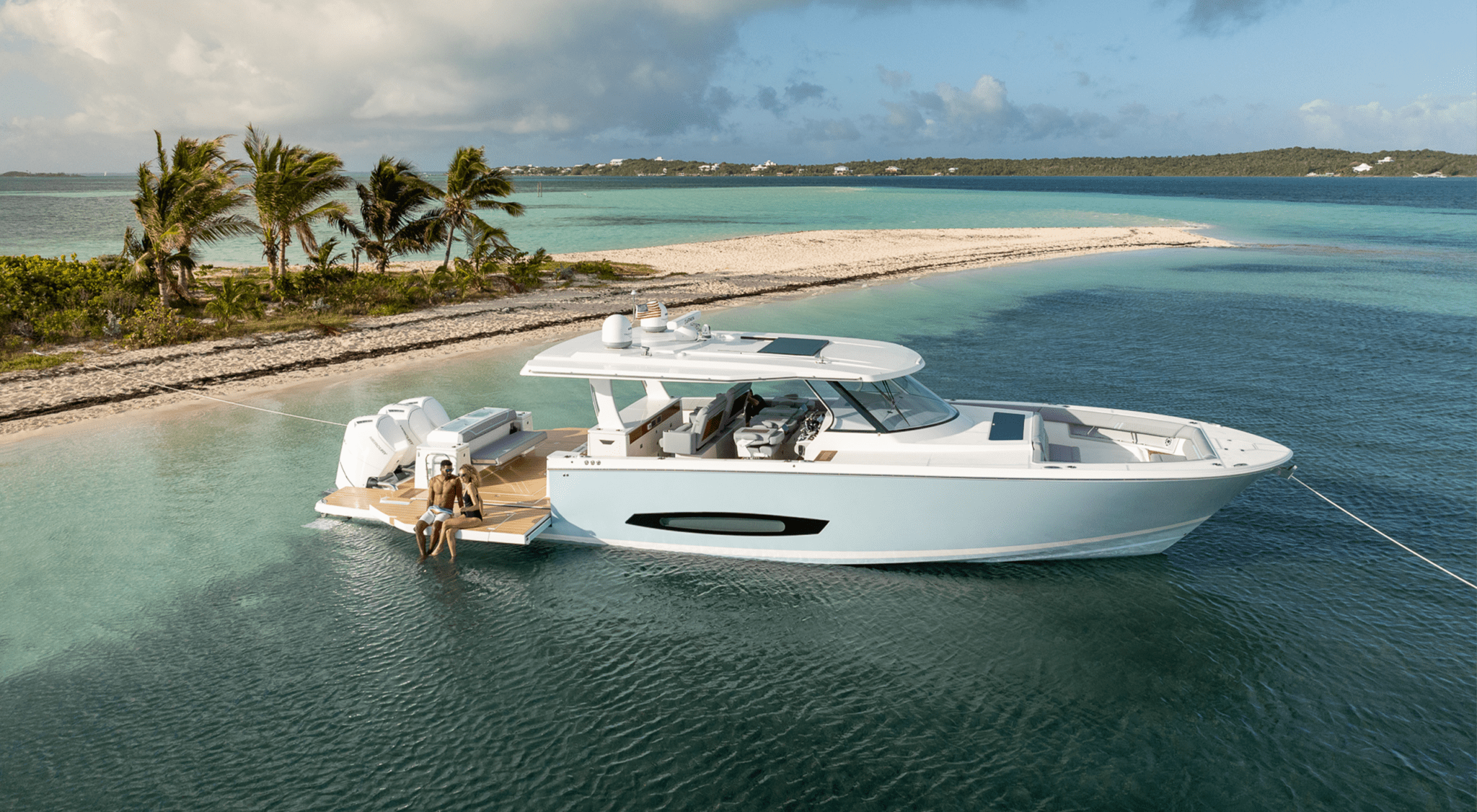Which of the Following is Recommended Maintenance for an Inboard Boat: Essential Tips for Top Performance
Inboard boats offer a unique and enjoyable boating experience. However, like any other watercraft, they require proper maintenance to ensure smooth and reliable performance.
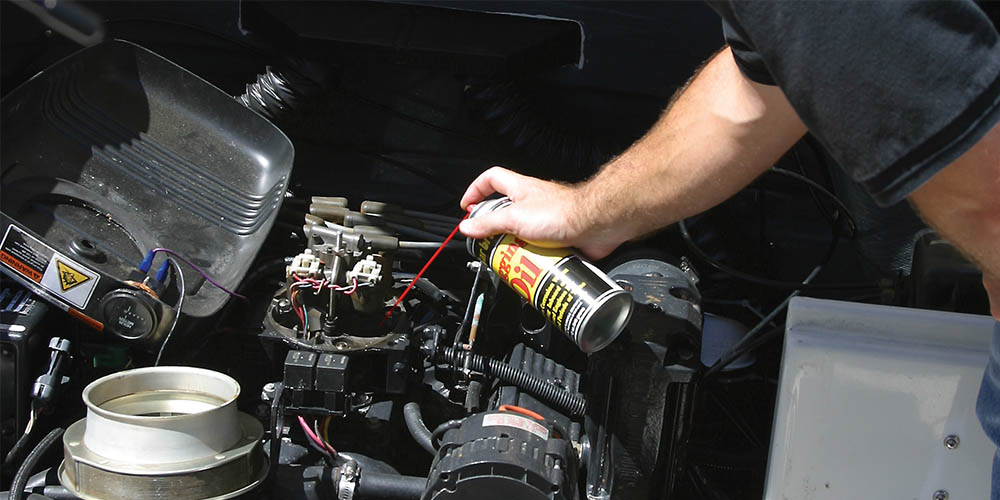
Understanding the recommended maintenance for an inboard boat is crucial for prolonging its lifespan and avoiding breakdowns on the water.
By ensuring that you conduct regular checks and follow necessary procedures, you can prevent costly repairs and keep your boat in excellent condition.
Routine maintenance tasks for inboard boats cover various aspects, from engine and electrical system checks to hull integrity inspections and safety equipment upkeep.

Keeping up with seasonal maintenance procedures, such as winterizing, is also important to protect your boat from damage due to changing weather conditions.
In addition to these essential tasks, understanding the specifics of inboard engine care and trailering and storage guidelines can help you maintain your boat's performance and preserve its value over time.
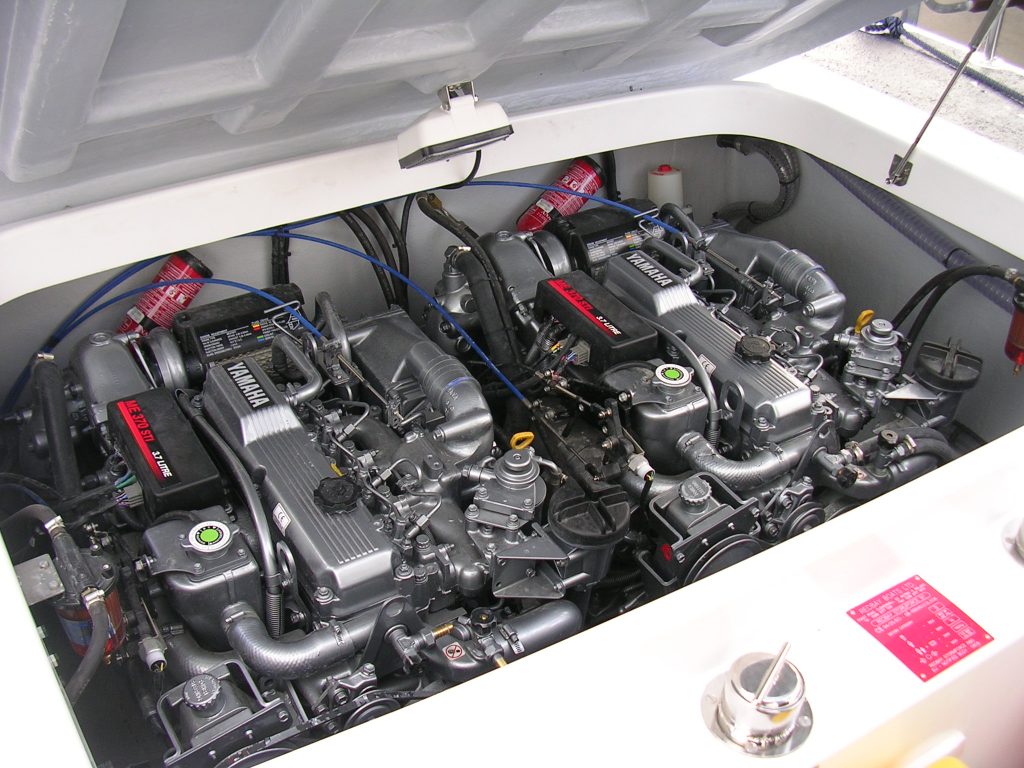
Key Takeaways
- Regular maintenance tasks and seasonal procedures are crucial for prolonging the lifespan and performance of an inboard boat.
- Keep an eye on the engine, electrical system, and hull while ensuring the upkeep of safety equipment.
- Understand the specifics of inboard engine care, trailering, and storage to protect your boat and maintain its value.
Understanding Inboard Boat Maintenance
Importance of Maintenance for Longevity and Safety
Proper maintenance of an inboard boat is crucial for its longevity and safety on the water.
Regular maintenance not only helps prevent expensive repairs and inconvenient breakdowns, but also ensures the boat operates smoothly and safely during its lifespan.
By following the recommended maintenance schedules, a boater can reduce the chances of accidents and ensure a pleasurable boating experience.
To further emphasize the importance of maintenance, inboard gasoline boats built after July 31, 1981, must have a mechanical ventilation system to reduce the risk of fire and explosion.
Adhering to such safety requirements and conducting regular maintenance checks enhances the safety of everyone on board.
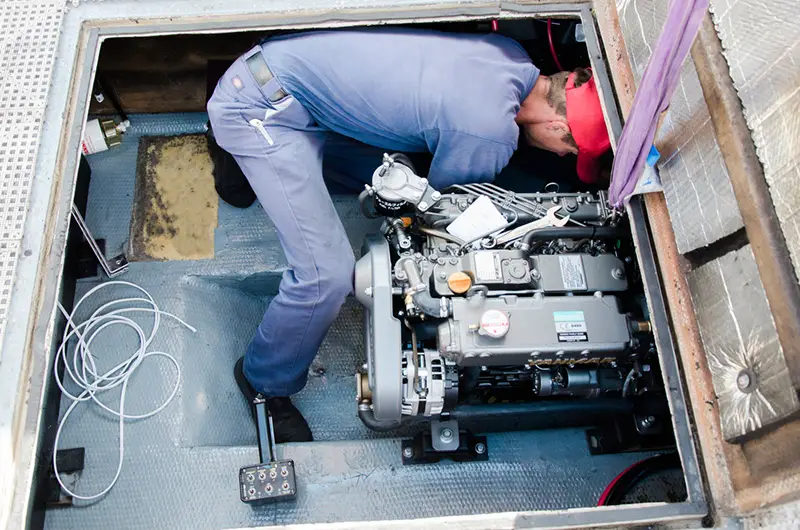
Key Maintenance Intervals
Several essential tasks should be performed at specific intervals to keep an inboard boat in optimal condition. Here is a brief overview of key maintenance intervals:
- Every 50 hours or annually: Oil changes are needed for inboard boats every 50 hours or at least annually. Regular oil changes protect the engine and ensure its efficient operation.
- Pre-season: It is wise to perform a thorough inspection of the boat before the start of each boating season. Check the fuel lines, hoses, belts, batteries, and cooling systems. Replace any worn or damaged parts, as needed.
- Fueling: After refueling your inboard boat, make sure to operate the ventilation blower for at least 4 minutes to remove any fuel vapors that may have accumulated during the fueling process.
- Post-season: Before storing your boat for the off-season, take the time to clean and protect it from potential damage caused by prolonged inactivity. Proper winterization is necessary to prevent issues like corrosion, mold, and mildew.
Routine Maintenance Checks
Engine Oil and Oil Changes
Performing regular engine oil changes is essential for maintaining the longevity and performance of your inboard boat.
Replace the engine's oil and oil filter according to the manufacturer's recommendations, as this helps reduce friction and heat buildup within the engine.
Checking the engine oil levels frequently can identify any potential issues that need to be addressed.
To ensure accuracy, be sure to consult the boat's owner's manual for proper oil change intervals and oil type.
Cooling System Inspection
A well-maintained cooling system is essential in preventing engine overheating.
Regularly inspect the condition of your boat's cooling system, including the water pump, impeller, and hoses.
Look for any signs of wear, leaks, or corrosion that could potentially lead to engine damage.
Implement a routine schedule for changing your boat's coolant, as stated in the owner's manual, to avoid potential problems.

Fuel System Management
Managing your boat's fuel system is another crucial aspect of inboard boat maintenance.
Routinely inspect fuel lines for leaks, damage, or wear and replace if needed.
The fuel filter should be changed regularly, as well, to ensure the fuel flow remains clean and efficient.
Keeping fuel tanks clean and filled with the appropriate fuel type is vital to avoid fuel contamination and engine damage.
Make sure to operate the ventilation blower for at least four minutes after fueling to remove any fuel vapors before starting the engine.
Bilge and Hoses Inspection
Regularly inspect the bilge and hoses in your inboard boat to ensure proper functioning and prevent water damage.
Make sure the bilge pumps are working correctly and have no clogs or debris.
Check the hoses for wear, cracks, or leaks and replace them if necessary.
Cleaning the bilge area frequently can prevent the growth of mildew, odors, or corrosion, and ultimately, contribute to a safer and more enjoyable boating experience.
Seasonal Maintenance Procedures
Winterizing Your Inboard Boat
Winterizing your boat is an essential step in protecting it from potential damage and corrosion during the cold months.
Begin by draining and flushing the cooling system to remove any salt or debris that may have accumulated. Then, add a non-toxic antifreeze to prevent freezing and damage to the engine.
Next, change the engine oil and filters to ensure smooth engine operation the next boating season.
It's important to also service the fuel system by adding a fuel stabilizer and running the engine to circulate the stabilized fuel through the system. This will help prevent fuel degradation and clogging.
To protect your boat's battery, disconnect and remove it from the vessel. Store the battery in a cool, dry place and periodically check the battery's charge to prolong its lifespan.
Finally, clean and inspect the bilges, removing any moisture or debris, and apply a moisture-absorbing product to prevent corrosion.

Spring Start-Up Checklist
As the boating season approaches, your inboard boat requires a thorough check to ensure it's ready for use.
Begin by inspecting the hull for any signs of damage or deterioration. Repair any cracks or blisters to prevent water ingress and further damage.
Reinstall your boat's battery, ensuring that it's clean and fully charged. Also, reconnect all electrical connections, checking for wear and corrosion. Replace any damaged components as needed.
Examine the cooling system by checking coolant levels and inspecting hoses, belts, and clamps for signs of wear or damage. Replace any worn components and top up coolant levels if required.
Start the engine and check for water flow, as this indicates proper functioning of the cooling system.
Additionally, inspect the fuel system for leaks, corrosion, or other signs of wear. Replace any damaged components and ensure all connections are secure.
It's also important to examine and clean or replace fuel filters to maintain optimal engine performance.
Finally, check the steering system for smooth operation and lubricate any moving parts as needed.
Electrical and Battery Upkeep
Battery Maintenance and Voltage Checks
Proper battery maintenance is crucial to ensure the smooth operation of your inboard boat's electrical systems.
To maintain your batteries in good condition, you should routinely perform visual inspections, checking for any signs of damage, corrosion, or loose connections.
It is essential to clean the battery terminals regularly using a wire brush and protective grease to prevent corrosion.
Battery voltage checks are another essential aspect of battery maintenance.
You should invest in a quality digital multimeter—a tool commonly used for measuring battery voltage.
It's wise to check the voltage levels of your batteries once a week or before a boating trip.
A fully-charged 12-volt battery should have a voltage reading between 12.6-12.8 volts, while a 50% charged battery would showcase around 12.0 volts.

Lighting and Electrical Connections
A reliable and efficient lighting system is vital for inboard boats as they navigate through various weather conditions and ensure safety during nighttime operations.
Make sure that your boat's navigation lights are working correctly and are of the appropriate type, size, and color according to the boat's specifications.
All navigational lights should be regularly checked for any malfunctions, damage, or worn-out bulbs, and replaced as necessary.
Maintaining your inboard boat's electrical connections is crucial for safe and optimal performance.
You should regularly inspect all electrical connections, such as wiring, switches, and fuses.
Tighten any loose connections and replace corroded or damaged wires to ensure the smooth and continuous operation of your boat's electrical system.
It is also a best practice to use dielectric grease on electrical connectors to protect against moisture and corrosion.
Structural Integrity and Hull Maintenance
Inspecting for Hull Damage and Corrosion
Regular inspection of your inboard boat's hull is crucial for detecting any signs of damage or corrosion.
It is essential to check the hull for any scratches, dents, cracks, or other irregularities that may affect the boat's performance.
Additionally, keep an eye out for any signs of corrosion, particularly around the hull zincs.
Hull zincs should be replaced if they show signs of deterioration, as they play a crucial role in protecting your boat's metal components from corrosion ^(1^).
When inspecting the hull, pay special attention to the following areas:
- Waterline: Examine the waterline for any signs of fading or discoloration, which might indicate damage from sunlight, algae, or barnacles.
- Rudder and propeller: Check for dents, chips, or cracks that could affect their performance.
- Thru-hull fittings: Look for any signs of corrosion or leaking around these fixtures.
Checking Fittings and Seals
Maintaining the fittings and seals on your inboard boat is also crucial for preventing leaks and ensuring the boat's overall integrity.
Regularly inspect all fittings, such as cleats, chocks, and handrails, for signs of wear, corrosion, or damage.
Tighten any loose fittings and replace those that are damaged or corroded.
The following tips may help you in checking the fittings and seals on your boat:
- Examine all hoses and connections for signs of wear or leakage.
- Inspect seals and gaskets around hatches, windows, and portholes for any signs of damage or deterioration. Replace any that show evidence of wear or leakage.
- Check the rub rail for any signs of damage, and ensure it is securely fastened to the hull.
Safety and Emergency Equipment
Life Jacket and Safety Gear Checks
It is essential for boat owners and operators to regularly inspect and maintain their life jackets and safety gear.
Life jackets should fit properly, be free of any damage, and stored in an easily accessible location on the boat. Regular checks ensure that the life jackets remain in good condition and are ready for use in case of an emergency.
In addition to life jackets, other important safety gear includes throwable flotation devices, fire extinguishers, visual distress signals, and sound-producing devices.
Each piece of equipment should be:
- Inspected for damage or wear
- Kept in a designated, easy-to-reach location
- Replaced if expired or no longer functioning
Emergency Response Preparations
Preparing for emergency situations requires more than just having the right safety gear on board. Boat operators must also be knowledgeable and confident in their ability to respond to emergencies.
Some recommended emergency response preparations include:
- Developing and practicing a customized emergency response plan
- Ensuring that all crew members and passengers know the locations of safety equipment
- Staying aware of local weather conditions and adjusting plans accordingly
In addition to these preparations, boat operators need a basic understanding of first aid, as well as knowledge of distress signals and communication procedures.
A boating safety course is an excellent way to learn these vital skills and ensure you are well-prepared to handle any emergency situations that might arise while on the water.
Performance Optimization
Propeller and Steering System Care
A well-maintained propeller is essential for the smooth operation of an inboard boat.
Regularly inspect the propeller for any signs of damage, such as dents, bends, or cracks. Remove any debris that may be entangled around the propeller shaft.
Make sure the propeller is securely fastened to avoid unnecessary vibrations and noise. Lubricate the propeller shaft periodically to ensure smooth rotation and prevent corrosion1.
Steering system care is also vital for optimum performance.
Inspect the steering cables for any signs of wear or damage. Replace damaged or worn cables immediately to ensure smooth and safe navigation.
Lubricate the steering cables and moving parts regularly to reduce friction and prolong their life2.

Engine Tuning and Horsepower
An optimally-tuned engine is necessary for maximizing the performance of your inboard boat.
Regularly check the engine gauges, such as oil pressure, temperature, and RPM, to ensure they are functioning correctly and efficiently.
Engine tuning involves checking and adjusting the engine's timing, fuel mixture, and idle speed to achieve an optimal balance between power, fuel efficiency, and emissions3.
To maintain optimal horsepower, follow the boat manufacturer's recommendations for engine maintenance.
This includes regular oil changes, replacing oil and fuel filters, and ensuring the exhaust system is in good working order.
Regularly check and clean the fuel injectors to prevent clogs, which can affect engine performance4.
Inboard Engine Specifics
Inboard Gasoline Engine Maintenance
Proper maintenance is essential for the reliable operation and longevity of an inboard gasoline engine.
One vital aspect of engine maintenance involves changing the oil. Typically, it is advisable to perform oil changes at least once a season1.
In addition to oil changes, it's crucial to inspect and replace fuel filters, spark plugs, and belts regularly.
Keeping the engine clean and free of debris can help prevent the buildup of harmful residues.
It's also important to check for any leaks or cracks in the fuel lines, as these may pose significant risks.
Before starting an inboard gasoline engine, it's necessary to operate the exhaust blower for at least four minutes to remove any fuel vapors that may have accumulated.
This process helps prevent the risk of explosions and ensures safe engine operation.
Transmission and Lubrication Considerations
Transmission fluid plays a crucial role in the smooth operation of an inboard boat's transmission system. It is essential to check the transmission fluid regularly and replace it as needed to ensure optimal performance.
Manufacturers typically provide guidelines on the frequency of transmission fluid changes for their specific models.
Lubrication is another integral part of inboard engine maintenance. Using a suitable marine-grade lubricant, it's essential to grease the steering cables and any moving parts as recommended by the boat's manufacturer.
Regular lubrication helps keep these components functioning efficiently and reduces wear and tear that may lead to a deteriorated engine.
Footnotes
Trailering and Storage Guidelines
In this section, we will discuss the proper guidelines for transporting and storing an inboard boat. To ensure your boat's longevity and prevent damage, it is essential to follow these guidelines for trailering and storage.
Transporting with Trailers
When transporting an inboard boat, it is crucial to use a trailer specifically designed for boats. These trailers will securely hold and protect your boat during the trip.
Make sure to inspect the trailer's components such as the lights, tires, and brakes before embarking on a journey. Additionally, it is essential to choose a trailer with a Gross Vehicle Weight Rating (GVWR) that can handle your boat's size and weight.
For trailers with a GVWR of 1,500 pounds or greater, it is required to have a braking system in place for added safety.
Some key tips for transporting an inboard boat with a trailer include:
- Properly securing the boat with straps and supports
- Checking the tire pressure and condition
- Ensuring all lights are working
- Regularly inspecting and maintaining the braking system
Long-term Storage and Protection
In order to keep your inboard boat in top condition, proper storage is essential. When storing your boat for an extended period, take the necessary steps to protect it from various elements.
Some of these preventive measures include:
- Clean and dry the boat thoroughly: Before putting your inboard boat in storage, clean its exterior and interior surfaces, ensuring that no water or moisture is left. Moisture can lead to mold and mildew growth, which can damage your boat.
- Apply a protective wax layer: After cleaning and drying the boat, apply a coat of wax to help protect it from dust, dirt, scratches, and other potential damage during storage.
- Use a high-quality boat cover: Consider investing in a durable and high-quality boat cover to shield your boat from UV rays, rain, and other environmental factors.
- Choose an appropriate storage location: Store your inboard boat in a cool, dry place, preferably indoors - either in a garage or a dedicated boat storage facility.
- Perform regular maintenance checks: Even during the storage period, regularly inspect and maintain your boat's critical components. This includes checking the engine, batteries, and electrical connections.
Annual and Long-Term Care Strategies
Annual Maintenance Review
An Annual Maintenance Review is essential in ensuring the proper functioning and longevity of your inboard boat. This review should encompass a thorough inspection of fluid levels, hoses, belts, and other components. For a well-rounded evaluation, consider the following checklist:
- Engine oil: Check and replace if necessary.
- Cooling system: Inspect and clean the system; refill with fresh coolant.
- Fuel system: Assess for leaks, clean fuel filters, and replace if needed.
- Stern drive and outdrive: Inspect for signs of wear or corrosion; lubricate as required.
- Anodes: Replace worn-out anodes to prevent galvanic corrosion.
- Electrical system: Check wiring, connections, and battery health.
Planning for Major Servicing
Following a more extensive long-term maintenance plan will further contribute to the durability and performance of your inboard boat. Major Servicing generally takes place every few years and includes tasks such as:
- Engine overhaul: Deep cleaning and, in some cases, rebuilding of the engine. Be vigilant of indications of engine aging.
- Transmission maintenance: Periodic servicing of the transmission system.
- Hull inspection and maintenance: Inspect the hull for any damages, blisters, or other issues; address accordingly by repairing or repainting the surface.
- Propeller/propshaft maintenance: Regular inspection and maintenance of propeller and propshaft components.
- Steering system upkeep: Check, repair, or replace steering cables or components as necessary.
Frequently Asked Questions
What are essential yearly maintenance tasks for a gasoline-powered inboard boat?
Annual maintenance for a gasoline-powered inboard boat typically includes changing the engine oil and filter, inspecting and replacing fuel filters, checking belts and hoses for wear, and inspecting the cooling system for leaks or clogs. It is also essential to check the voltage level of the boat's battery and replace it as needed.
How often should you perform engine maintenance on an inboard boat?
Regular engine maintenance on an inboard boat should be performed at least once per boating season. However, some tasks, like checking the oil level and inspecting the belts, should be done more frequently. It is always a good practice to consult the owner's manual for specific recommendations for the boat's make and model.
What steps should be taken to prepare an inboard boat for offseason storage?
To prepare an inboard boat for offseason storage, the following steps should be considered: changing the oil and filter, adding fuel stabilizer to the fuel tank, flushing the cooling system, draining water from the engine, applying fogging oil to protect internal engine components, and disconnecting the battery. Properly covering the boat and storing it in a dry, ventilated area is also essential to protect it from weather damage.
What safety checks should be conducted regularly on an inboard boat?
Safety checks on an inboard boat involve inspecting fuel lines and connections for leaks and corrosion, checking the bilge and exhaust system for any blockages or debris, making sure the exhaust blower is operated before starting the engine, and ensuring the boat has the necessary safety equipment like life jackets, throwable devices, and fire extinguishers.
What are common signs of necessary maintenance on an inboard boat engine?
Common signs of a boat engine needing maintenance include difficulty starting, loss of power, poor fuel efficiency, overheating, excessive smoke or fumes, and strange noises or vibrations. Regular inspections can help identify such issues early and prevent more severe problems.
How should inboard boat cooling systems be maintained?
Maintaining the cooling system of an inboard boat involves flushing it with fresh water to remove salt, debris, and contaminants. You should also inspect the coolant level and condition, and check for leaks or damage in the hoses and other components. It is also important to replace the coolant as recommended in the owner's manual and ensure that the water intake strainer is clean and functioning correctly.
Charlie is Editor-in-Chief of Sea Magazine
